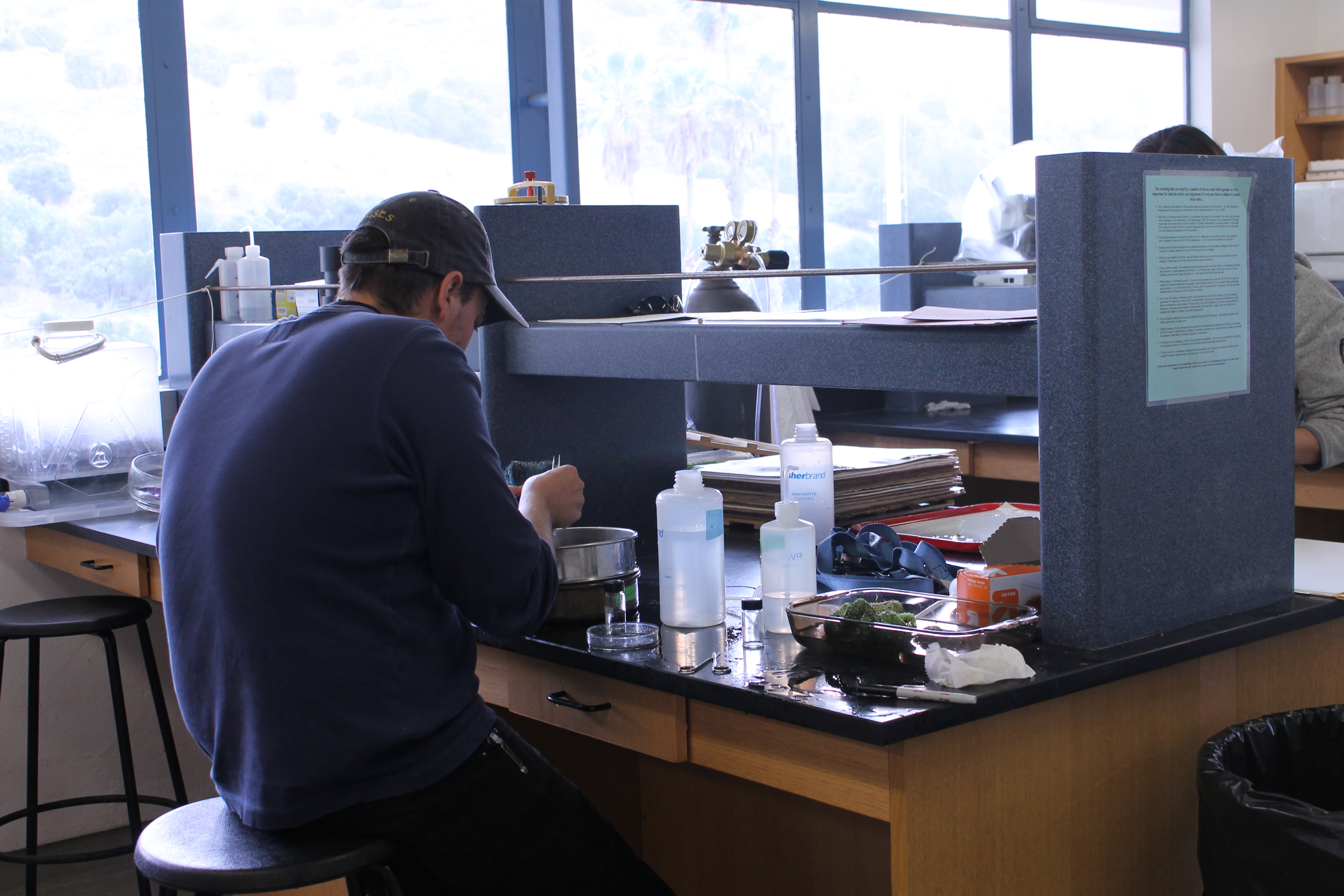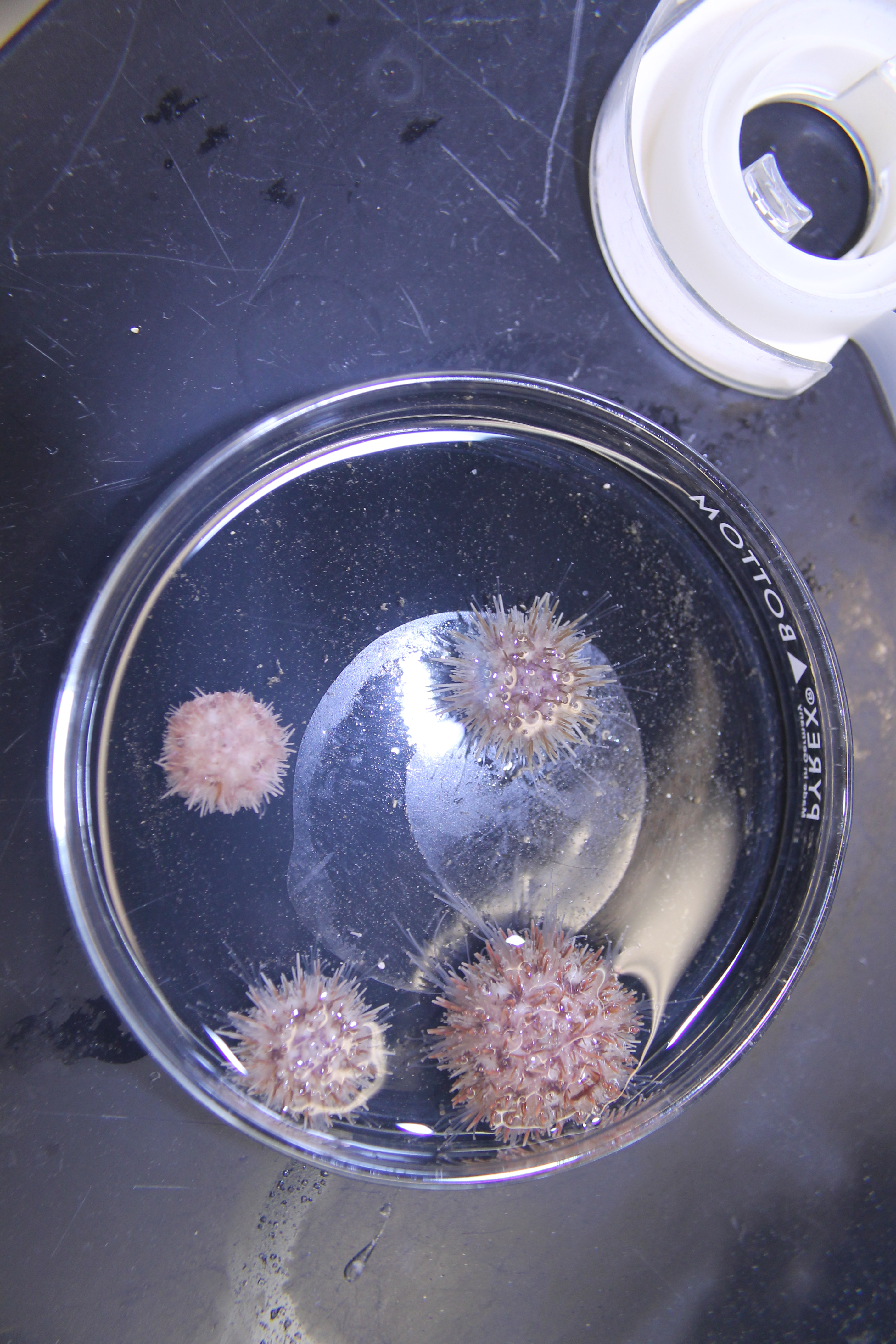By Michelle Marraffini
Invertebrate Zoology and Molecular Ecology

A six hour drive and an hour long boat ride from Moss Landing Marine Laboratories brings you USC’s marine laboratory, Wrigley Institute of Environmental Science on Catalina Island. Here several current and past students are working to understand the unique habitats surrounding the coves of this island, Rhodolith beds. Rhodoliths are free living coralline algae that branch out from a central axis to form a round ball. These balls aggregate to form beds which provide a great amount of habitat heterogeneity in area that is surrounded by soft sediment. These beds are home to a large amount of invertebrates including white urchins we found on our last dive trip down to Catalina Island. Scott Gabara, blog co-author and phycology student, is studying the invertebrate recruitment of invertebrates to these beds. He brought a group of Moss Landing students, lab helpers and divers, down to help collect and analyze recruitment devices placed in the beds last October and to collect samples for isotopic analysis of the community. The results of this experiment are yet to be analyzed but we had a blast collecting them.


